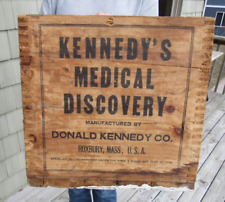
Neurobiologists are using genetic engineering to reprogram skin cells – of patients with schizophrenia and other neurological disorders – and grow them into brain cells, creating mental diseases-in-a-dish for experimentation and industrial-scale psychiatric drug discovery. The researchers, Fred Gage, a professor of genetics at the Salk Institute, and Anirvan Ghosh, a neurobiologist at the University of California, San Diego, say their technique allows them to “turn back the clock” to uncover what goes wrong in the brain during the early stages of a neurodegenerative disease. “It’s quite amazing that we can recapitulate a psychiatric disease in a petri dish,” mused Gage. “This allows us to identify subtle changes in the functioning of neuronal circuits that we never had access to before.”
The technique is currently limited to “laying down neurons,” says Gage, but he hopes to be able to differentiate cells into specific neuronal subtypes in the future. “For example, to differentiate and model the cortical neurons, which are responsible for thinking tasks, or the hippocampal neurons, which are responsible for memory tasks. The future of this is really exciting because the dish is going to get much more complicated.”
Drug discovery looks to be one of the killer apps for the new technique – particularly when the disease-in-a-dish is combined with a lab-on-a-chip. “The bioengineering part of this is becoming very exciting,” enthused Gage. “It will enable three-dimensional cultures so you can have dopamine neurons projecting through a gradient into the types of neurons affected by Parkinson’s disease, for example. This way you can set up a whole neuronal network or circuitry that hopefully will be akin to what you see in the brain.”
Interestingly, Gage has observed that dish neurons appear to undergo structural changes when they are exposed to neuropsychiatric drugs. This was unexpected, as neuropsychiatric drugs are developed on the premise that mood is modulated by regulating the neurotransmitters – such as dopamine and serotonin – available in the brain. “One of the take home messages I got from my study is it’s not just the moment-to-moment regulation of dopamine that may be affecting the symptoms of schizophrenia, but the structural organization of how these synapses interact with each other. In other words, changing the regulation of dopamine or some other compound appears to have the additional effect of causing structural modifications that also affect how neurons interact,” Gage explained.
Both Ghosh and Gage are excited at the potential to stratify patient groups and develop personalized therapies that are the most appropriate for each patient. “There are many causes for autism, so the same drug may not work for all patients with this disorder. But we could see how the cultured neurons of these patients respond to a particular drug or stimulus,” said Ghosh.
Gage agrees, adding that there is going to be an exciting interface between basic scientists and clinicians. “In schizophrenia, for example, it’s not unusual for a physician to test three or four different psychoactive drugs before they find the one a patient can minimally respond to. But suppose we could stratify patients to select the most likely appropriate drug based on their own brain cells and how they function? Furthermore, this will help us understand mechanistically how and why some patients may respond to the same drugs and others do not,” he suggests.
Related:
Discuss this article in our forum
High incidence of placebo use in psychiatry
Novel psychiatric drugs take aim at gut bacteria
Scientists manipulate immune system to produce “anti-Prozac”
Alzheimer’s may be transmissible a la mad cow disease


















Comments are closed.